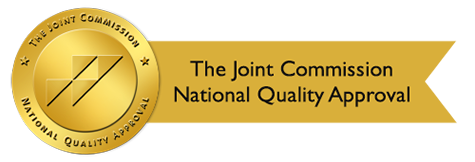Tramadol is one of the least potent opioid painkillers in the market today, which is why many are mistaken in believing that it is not that addictive. However, like many substances, people can become addicted to it without even noticing it.
Tramadol, when taken in a higher dosage than prescribed, or unprescribed at all, is considered substance abuse. When combined with other drugs or substances, the severity of the side effects can become more dangerous over time.
What Is Tramadol?
Tramadol is a prescription drug, often in an oral tablet form, available as an immediate-release and extended-release tablet. This means there are fast-acting variants of the drug (immediate-release) as well as a slow-acting version (extended-release) that are prescribed depending on what is necessary for the situation. Tramadol is an opioid pain-killer, commonly used to treat moderate to severe pains. Tramadol works by altering how the mind perceives pain by controlling chemicals and receptors in the brain usually responsible for detecting pain. Tramadol is a controlled substance and should only be used under a doctor’s close supervision. When left unchecked, several side effects could be detrimental to you or your loved one’s health.FDA Tramadol Warnings
The Food and Drug Authority (FDA) has several boxed warnings for the drug Tramadol. These include the following:- Addiction and misuse warning
- Risk Evaluation and Mitigation Strategy (REMS)
- Slowed or stopped breathing warning
- Accidental ingestion warning
- Life-threatening effects for children warning
- Neonatal opioid withdrawal symptom warning
- Interactions with certain drugs warning
- Interaction with benzodiazepines warning
The Dangers and Side Effects of Tramadol
Even when closely monitored, Tramadol use can have adverse effects on the user. This is why proper dosage and continuous monitoring are needed to minimize these effects. Tramadol abuse can lead to more severe effects or even overdose. The following are common side effects of Tramadol use:- Nausea and vomiting
- Constipation
- Fever
- Dizziness
- Poor focus
- Muscle pain
- Uncontrolled sweating
- Depression
- Loss of appetite
- Lack of energy
- Mouth dryness
- Serotonin Syndrome
- A life-threatening condition
- Fast heart rate
- High blood pressure
- High body temperature
- Poor body control
- Nausea
- Vomiting
- Diarrhea
- Hallucinations
- Comatose
- Agitation
- Severe breathing problems
- Slowed breathing
- Very shallow breathing
- Fainting
- Dizziness
- Confusion
- Substance dependence and Withdrawal
- Irritability
- High blood pressure
- Dilated pupils
- Teary eyes
- Diarrhea and stomach cramps
- Uncontrolled sweating
- Muscle pain
- Adrenal insufficiency
- Tiredness
- Sleeping troubles
- Abdominal pain
- Androgen insufficiency
- Tiredness
- Insomnia
- Decreased energy
- Uncontrolled seizures
Detecting Tramadol Addiction
Those with a history of substance abuse are more likely to develop a dependence or addiction to Tramadol. However, even those who have not experienced any form of substance addiction are still capable of developing an addiction or dependence on the drug. According to the Diagnostic and Statistical Manual of Mental Disorders, there are a total of 11 criteria that characterize addiction. The number of met criteria can indicate the severity of their drug dependence or drug addiction. The criteria includes the following:- Lack of control (using amounts larger than prescribed)
- Desire to limit usage but being unable to do so
- Using a considerable amount of time to procure acquiring the substance
- Intense and sudden cravings to use the substance
- Lack of responsibilities in work, school, or socially
- Relationship problems related to substance abuse
- Loss of interest in recreational or social activities in favor of drug use
- Continued drug use despite dangerous circumstances
- Worsening physical and psychological problems
- Heightened tolerance to the substance
- Physical or emotional withdrawal can cause anxiety, irritability, and/or nausea.
Behavioral Signs of Tramadol Addiction
There are some behaviors you can look out for if you suspect someone has Tramadol addiction:- Visiting multiple sources to procure more Tramadol (doctor shopping)
- Compulsive Tramadol use
- Neglecting responsibilities in work, school, or at home
- Mood swings
- Buying Tramadol without a prescription
- Apathy
- Poor focus
- Inability to feel pleasure
- Vomiting from large doses
- Poor body coordination
- Spending the majority of time using or procuring Tramadol
- Hiding or leaving behind bottles of Tramadol
- Taking higher dosages than prescribed




1 thought on “The Dangers of Tramadol Abuse”
Hello, my boyfriend is an addict of tramadal taking a tab every after 4hr, I really need your help to save his life please🙏